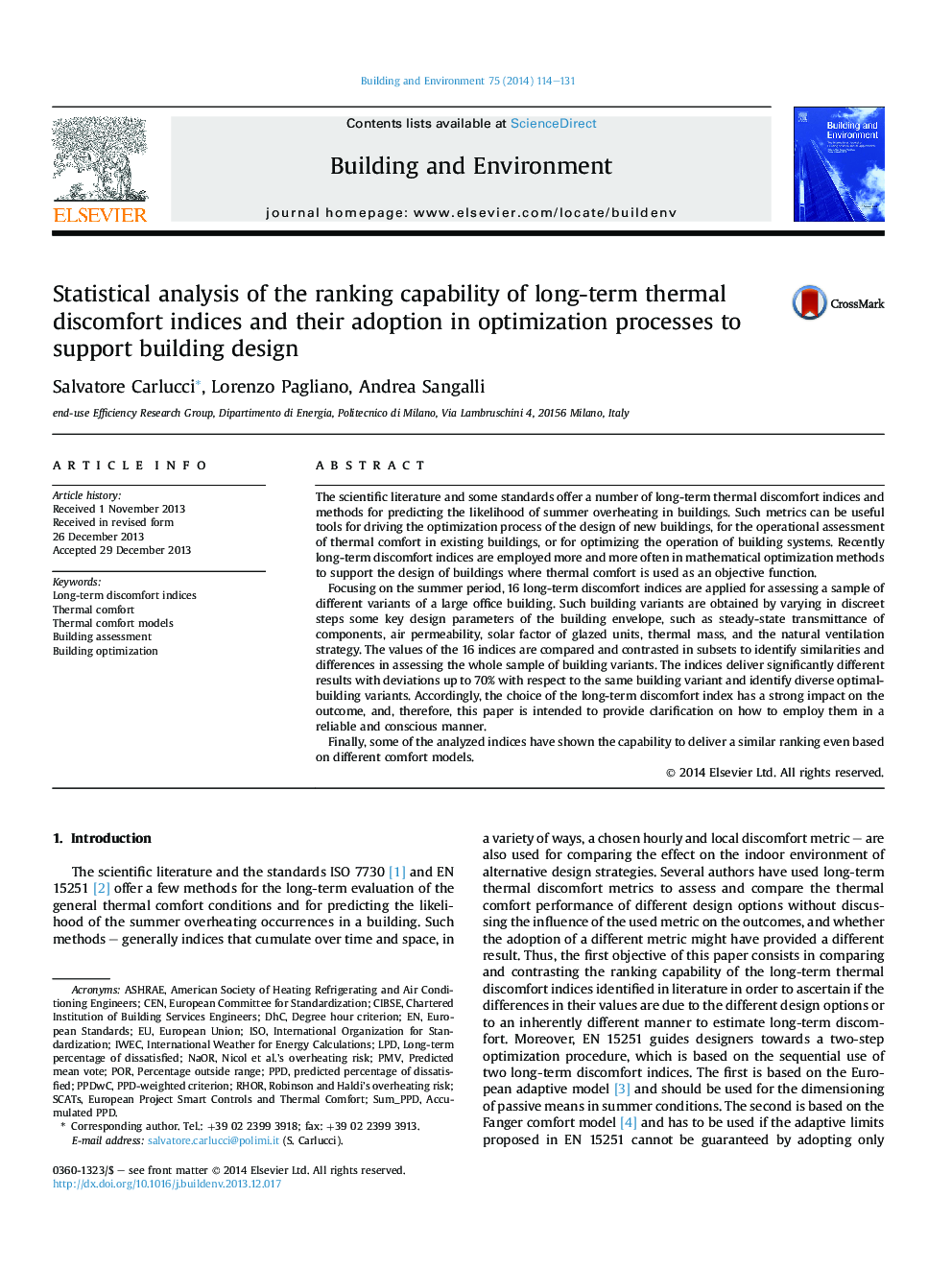| کد مقاله | کد نشریه | سال انتشار | مقاله انگلیسی | نسخه تمام متن |
|---|---|---|---|---|
| 248201 | 502552 | 2014 | 18 صفحه PDF | دانلود رایگان |
• Long-term discomfort indices assess the likelihood of discomfort on a long period.
• The existing long-term discomfort indices provide different design information.
• Ranking capability of indices are compared to highlight similarities and differences.
• Some indices based on different comfort models provide similar and monotone results.
• Some indices can be reliably used in the optimization procedure proposed in EN 15251.
The scientific literature and some standards offer a number of long-term thermal discomfort indices and methods for predicting the likelihood of summer overheating in buildings. Such metrics can be useful tools for driving the optimization process of the design of new buildings, for the operational assessment of thermal comfort in existing buildings, or for optimizing the operation of building systems. Recently long-term discomfort indices are employed more and more often in mathematical optimization methods to support the design of buildings where thermal comfort is used as an objective function.Focusing on the summer period, 16 long-term discomfort indices are applied for assessing a sample of different variants of a large office building. Such building variants are obtained by varying in discreet steps some key design parameters of the building envelope, such as steady-state transmittance of components, air permeability, solar factor of glazed units, thermal mass, and the natural ventilation strategy. The values of the 16 indices are compared and contrasted in subsets to identify similarities and differences in assessing the whole sample of building variants. The indices deliver significantly different results with deviations up to 70% with respect to the same building variant and identify diverse optimal-building variants. Accordingly, the choice of the long-term discomfort index has a strong impact on the outcome, and, therefore, this paper is intended to provide clarification on how to employ them in a reliable and conscious manner.Finally, some of the analyzed indices have shown the capability to deliver a similar ranking even based on different comfort models.
Journal: Building and Environment - Volume 75, May 2014, Pages 114–131
